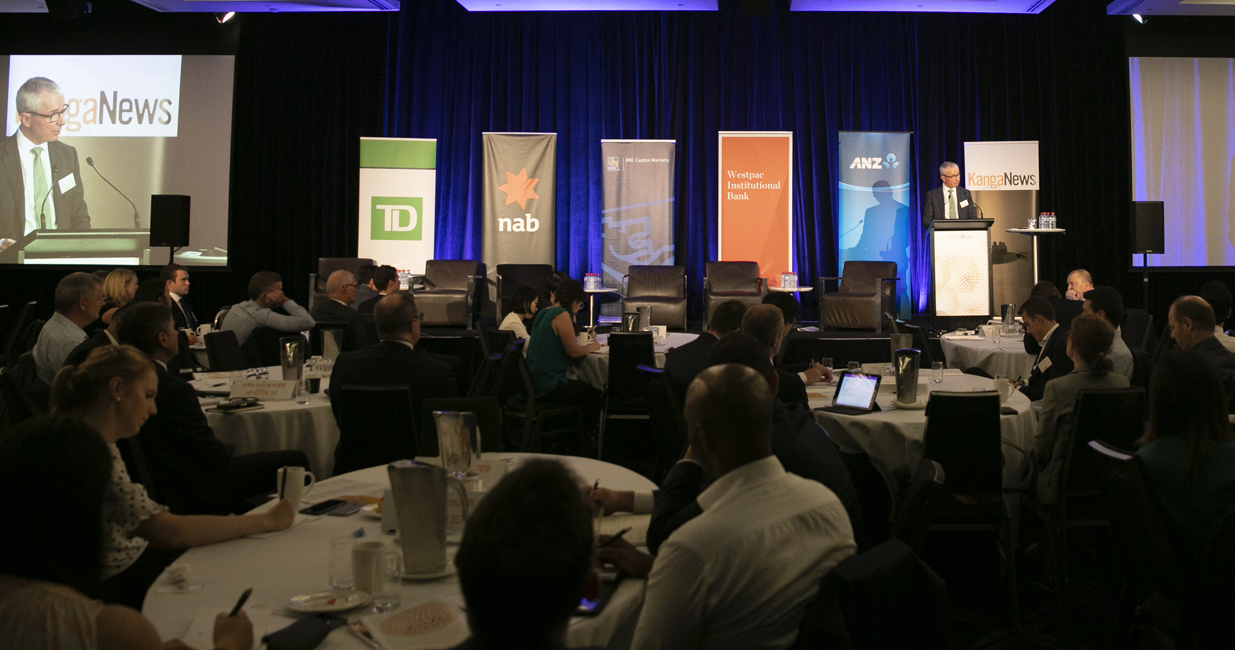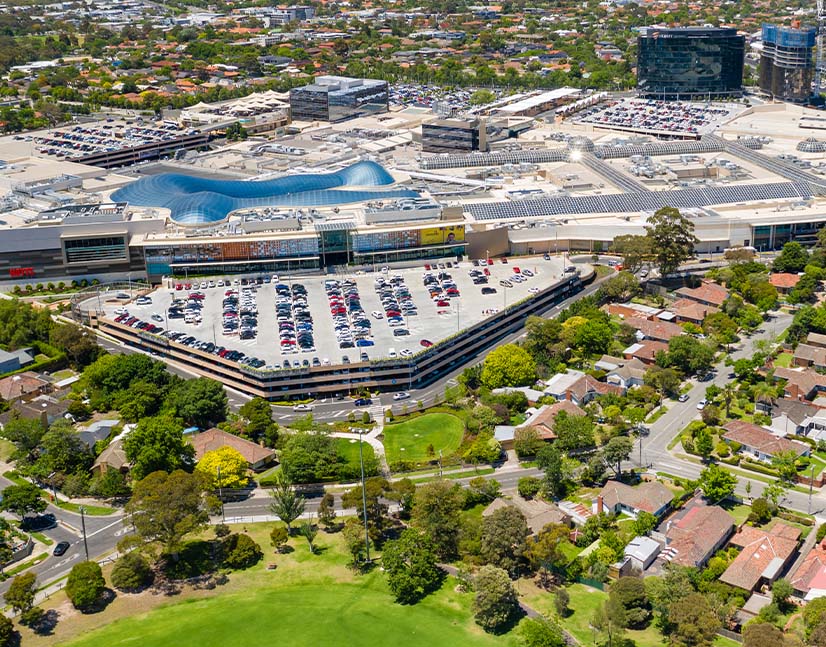
APRA’s “door open” to ALAC developments
The Australian Prudential Regulation Authority (APRA) has hinted that its plan for the forthcoming Australian loss-absorbing capacity (ALAC) regime to be funded predominantly via tier-two instruments may not be set in stone. It remains unclear what shape the final regime will take, but more options now appear to be on the table than when plans were initially announced.
Speaking at the KangaNews DCM Summit in Sydney on 19 March, Pat Brennan, executive general manager, policy and advice at APRA in Sydney, gave an update on the regulator’s as-yet-incomplete consultation on its initial proposal from November last year.
He said that while on occasion APRA has “a clear answer in mind” ahead of a consultation that is mainly an opportunity for market participants to provide new information, the ALAC process is perhaps more of a fact-finding mission for the regulator.
“This is more in the sphere of going into new territory,” Brennan commented. “We have a clear idea of something that appeals to us but the consultation process is us saying ‘give us the full information’.”
Responses to the consultation clearly highlighted the perceived challenges a tier-two only ALAC regime could face. “We have been given clear feedback that the quantum of tier-two targeted… will test the bounds of investor capacity. Some submissions questioned whether there are lower-cost options to achieve the same level of recapitalisation capacity. On the other hand, we have also received feedback from some parties that using existing, proven capital instruments is a very good idea,” Brennan revealed.
As such, Brennan revealed that APRA is still open to considering “everything we have seen internationally” as options for ALAC fulfillment – including senior nonpreferred or other types of bail-in security that would be new to Australian banks. Brennan said the Canadian, Eurozone and UK options were the most commonly raised in consultation responses.
Asked by an audience member whether APRA’s door is “more open than usual” when it comes to revising its initial view, Brennan said “it is always an open door from our perspective, but more people have walked through the door this time.”
However, he also stressed that APRA “is still considering submissions received and gathering additional information, and as such we have not yet made any decisions on the proposals”. He added that it would be “incorrect to assume a softening of final answer, but we are pausing to consider”.
Speaking at another conference on 27 March, Wayne Byres, chairman at APRA in Sydney, reiterated Brennan’s comments and said: “We’ve received feedback that our proposals need some revision. We will look at this carefully, but we do not wish to jeopardise two key objectives: developing a framework that is relatively simple to implement and understand, and that does not jeopardise the access to funding that high credit ratings provide. This will be an important area of work in the months ahead.”
“We have been given clear feedback that the quantum of tier-two targeted… will test the bounds of investor capacity. Some submissions questioned whether there are lower-cost options to achieve the same level of recapitalisation capacity. On the other hand, we have also received feedback from some parties that using existing, proven capital instruments is a very good idea.”
Tier-two capacity
APRA’s initial discussion paper on ALAC outlined plans to increase the total capital requirement of Australia’s four major banks by 4-5 per cent over a four-year period, with the majority of the uplift to be met through the issuance of tier-two instruments.
The volume of tier-two capital that would be required of the major banks has been one of the key concerns for market participants. Issuers and investors doubt whether capacity for tier-two – domestic and international – would be sufficient to support the amount of issuance that would be needed.
When the discussion paper was released, a Westpac Institutional Bank research note estimated that the major banks would need to raise more than A$20 billion (US$14.1 billion) per annum in tier-two capital to meet the requirements, representing a significant increase from the total A$35 billion of existing tier-two stock.
Terry Winder, group treasurer at Commonwealth Bank of Australia in Sydney, said at the KangaNews conference that the total volume of tier-two capital could become a problem at times of market volatility.
Meanwhile, Philip Miall, director, credit at QIC in Brisbane, said: “We think it is likely that tier-two spreads will move meaningfully wider given capacity constraints, particularly during periods of elevated volatility or if markets are dislocated.”
Curt Zuber, Sydney-based group treasurer at Westpac Banking Corporation, commented: “It is in everyone’s interest to have a regime that works through the cycle. We need to work constructively with the regulator to ensure this”.
One of the biggest problems with leaning on tier-two capital for ALAC derives from the fact that most other jurisdictions have opted for the use of a new instrument to satisfy requirements – either a new layer of capital between tier-two and senior or by making all senior bonds subject to bail-in.
Global markets have swiftly developed familiarity with this approach, leaving tier-two something of an orphan in international markets. The concern from Australia is that if they become the source of a significantly larger component of global tier-two supply it will be hard, if not impossible, to fill the requirement economically.
Australia’s four major banks put a joint submission to APRA on its discussion paper. Eva Zileli, Melbourne-based head of group funding at National Australia Bank, told the KangaNews conference that they outlined market issuance and analysis which found that the capacity of global markets for a senior nonpreferred type of instrument would be twice as large as the capacity for tier-two.
Christopher Joye, Sydney-based co-chief investment officer and portfolio manager at Coolabah Capital Investments, says there has been US$350-400 billion of tier-three issuance globally in the last 12 months – around 10 times more than the amount of global tier-two issuance.
“There are fewer portfolio constraints for tier-three instruments than there are for tier-two, so it tends to be easier and cheaper for banks to issue. Australian tier-two capital already trades wide to global tier-two due to the nebulous nonviability clause, so the extra volume required will be likely to push this even wider,” says Joye.
Brennan acknowledged that these concerns are valid, and says APRA is thinking through the options and gathering additional information. But he says APRA “would still prefer a solution that is on the side of simplicity”.
“There are fewer portfolio constraints for tier-three instruments than there are for tier-two, so it tends to be easier and cheaper for banks to issue. Australian tier-two capital already trades wide to global tier-two due to the nebulous nonviability clause, so the extra volume required will be likely to push this even wider."
Rationale and response
Brennan also elucidated on the rationale for APRA in opting for tier-two capital to make TLAC requirements. He said TLAC approaches in many jurisdictions were formulated in response to the “painful, lived experience” of having to bail out troubled banks during the financial crisis.
In Australia, “the objective is to protect the community from the potentially devastating broader impacts of financial crises. This is done firstly by reducing the probability of failure and secondly by establishing sufficient recapitalisation capacity such that, should a failure or near-failure occur, the overall cost is minimised”.
Adrian Went, group treasurer at ANZ Banking Group in Melbourne, said the process so far has been genuinely constructive and APRA has been open to feedback. Kanganews’s feedback from various sources indicates the wider market appears to have a clear preference for a senior non-preferred or senior bail-in instrument consistent with global norms.
Steve Goldman, managing director at Kapstream Capital in Sydney, said: “Supply creates its own demand and if it is in tier-two I’m sure the banks will be able to raise it – they just may not be very happy with the price they have to pay. A tier-three instrument certainly appears to be an easier way of fulfilling APRA’s goals.”
Australian investors have been relatively slow to take up senior nonpreferred deals printed in Australian dollars by global banks, Miall argued that local demand would evolve quickly if it were to be mandated by APRA and used by the Australian major banks.
Meanwhile, David Hanna, Sydney-based division director and senior portfolio manager, fixed income, at Macquarie Investment Management, suggested harmonisation with global standards would be beneficial for the market and make it easier for investors.
Given the amount of capital required, though, Joye said it will inevitably be the rest of the world which funds the majority of the requirement. Therefore, he argued that it is necessary to determine what instrument the rest of the world will be able to buy and at what price. Tier-three is clearly the default option in this context.

WOMEN IN CAPITAL MARKETS Yearbook 2023
KangaNews's annual yearbook amplifying female voices in the Australian capital market.
















